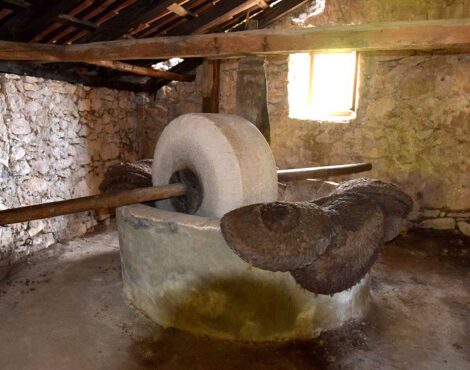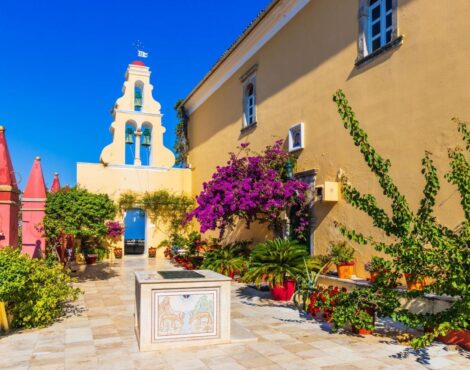Local Hands, Timeless Crafts: The Artisans of Corfu
Corfu is known for its music, its food and its sea, but hidden behind the daily rhythm of the island lies another world that of the artisans. In workshops tucked between olive groves or narrow alleys, men and women continue crafts that have been part of Corfiot life for centuries. They work quietly, shaping wood, metal, clay and fabric into objects that carry both beauty and memory.
The Spirit of Craftsmanship
The people of Corfu have always been makers. The island’s position at the crossroads of trade and culture brought materials and ideas from many lands. Venetians, French and British each left something behind, but the hands of Corfiots gave it all local character. Craftsmanship here is not only about skill it is about pride and patience. Every piece tells a story, every creation holds the touch of its maker.
The Woodcarvers and Icon Painters
In the countryside, especially near old monasteries, woodcarvers still shape frames and church furniture using methods unchanged for generations. Their tools are simple, their work precise. The scent of pine and olive wood fills the air as they carve crosses, icons and decorative patterns inspired by nature.
Icon painting also survives as a living art. Following Byzantine tradition, artists prepare wooden panels, apply gold leaf and mix pigments by hand. Their icons are not just images but prayers expressed in color and form. Visitors who watch the process often describe a sense of calm, as if the act of creation itself becomes a form of meditation.
The Potters of Corfu
Clay has been shaped on the island since ancient times. Traditional pottery workshops, especially in villages like Benitses and Sinarades, continue to produce jugs, bowls and lamps with designs inspired by the sea and olive trees. Many artisans now mix old forms with modern aesthetics, creating ceramics that are both functional and artistic.
The sound of the wheel, the steady movement of hands and the glow of the kiln form part of the daily rhythm. In these studios, visitors can sometimes try the craft themselves, feeling how the clay responds to touch and patience.
Weaving and Embroidery
Corfu’s women have long been the keepers of textile traditions. In mountain villages, looms still weave cotton and linen fabrics decorated with geometric patterns and floral designs. Some older women continue to embroider tablecloths and curtains for family weddings, their fingers moving with memory rather than thought.
These textiles carry more than beauty; they carry meaning. The patterns often symbolize fertility, harmony and protection, connecting each piece to family and faith. Even when displayed in modern homes, they bring a sense of continuity between generations.
Musical Instruments and Metalwork
Corfu’s connection to music extends to its craftsmen. Some artisans specialize in repairing or building instruments — violins, mandolins and even the brass pieces of the island’s philharmonic bands. Their small workshops hum with sound, where tradition meets artistry.
Metalworkers, too, continue an ancient trade. In Corfu Town, narrow streets hide forges where blacksmiths make gates, lanterns and church bells. Watching them work is like watching fire and metal dance together until they find their final form.
Olive Wood and Natural Art
Many modern artisans draw inspiration from the island’s landscape. Olive wood, with its twisting grains and warm tones, has become a favorite material. From it they carve kitchen utensils, sculptures and jewelry. Each piece has a unique pattern, as if the spirit of the tree lives on in its new form.
Others use natural materials like sea glass, shells and stones, turning the gifts of the island into small works of art sold in local markets. Their creations blend craftsmanship with the simplicity of everyday life.
Workshops and Markets
Exploring Corfu’s markets offers a glimpse into this creative world. In the old town, near the open-air stalls of fruit and spices, small shops display handmade goods that reflect the island’s soul. Visitors can meet the artisans, watch them work and understand that what they create is not mass-produced but shaped with care and time.
In recent years, local initiatives have encouraged younger generations to learn traditional crafts. Workshops and festivals celebrate this heritage, ensuring that these skills will not fade but evolve with new ideas.
The Value of Handmade
In a world of machines and fast production, Corfu’s artisans remind us of something essential the human touch. Each object, whether a wooden cross, a ceramic bowl or a woven fabric, carries a piece of the maker’s story. To buy something handmade here is to take home a fragment of the island’s heart.
These crafts are more than souvenirs they are expressions of identity and continuity. They show that even as life changes, the hands of Corfu still create with the same devotion that shaped the island for centuries.





